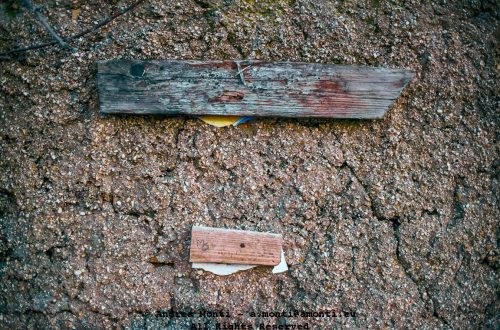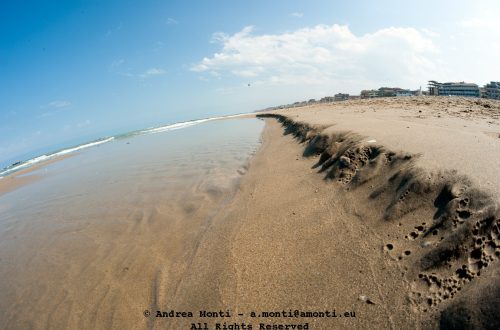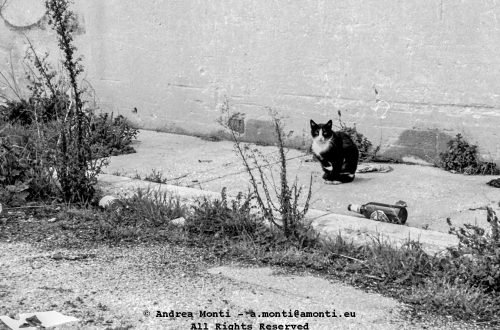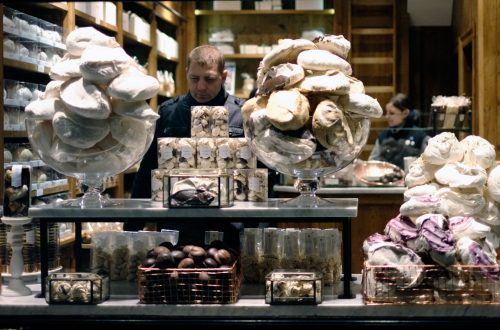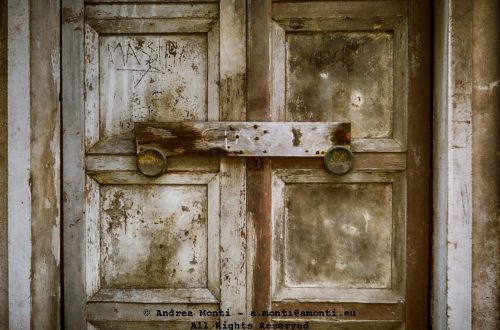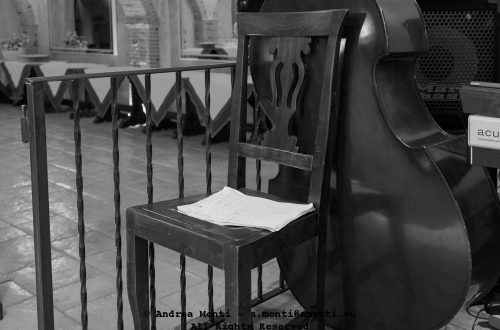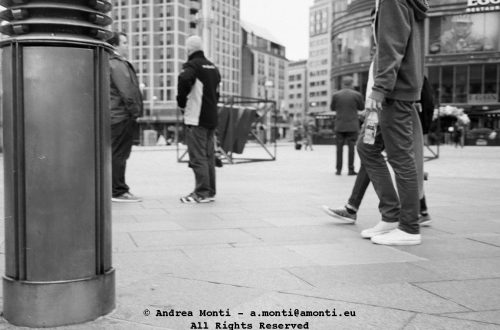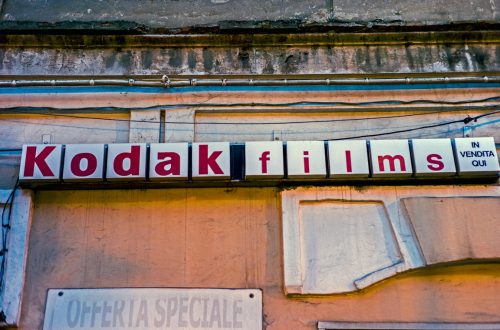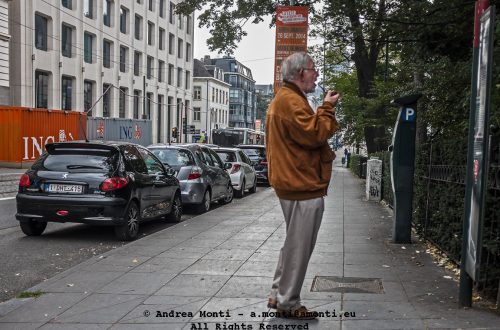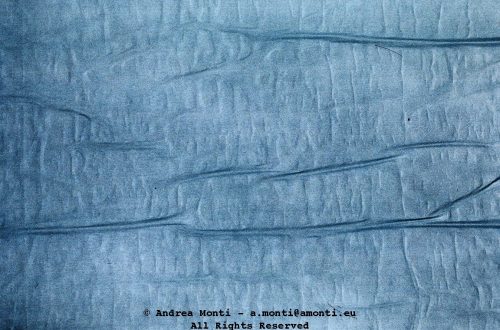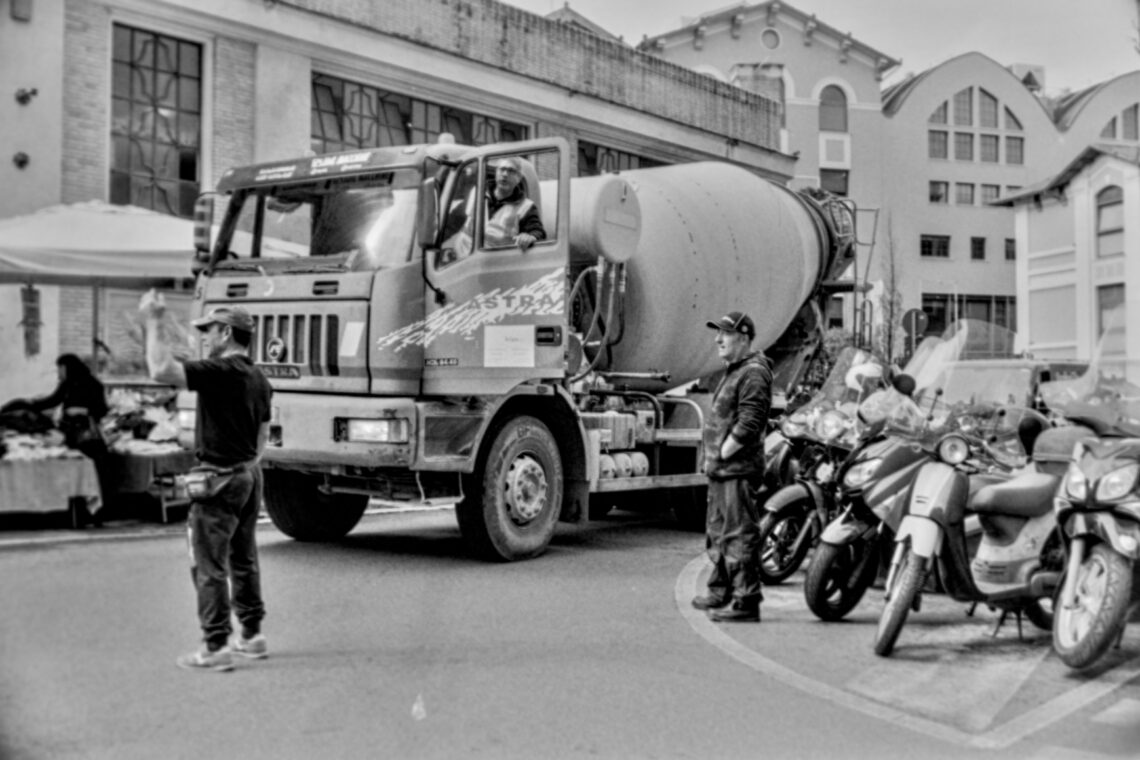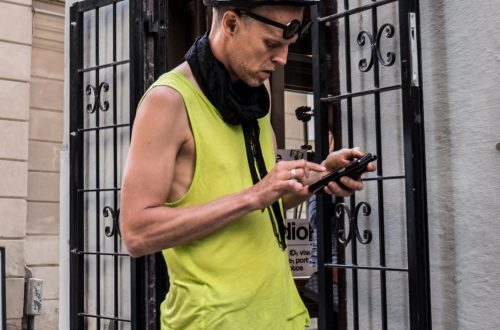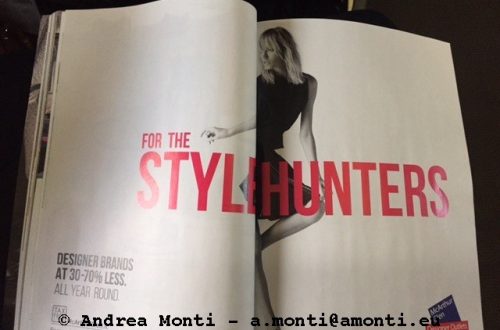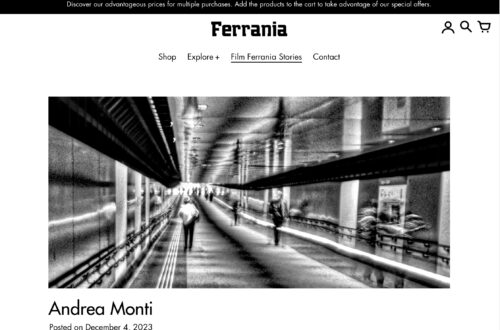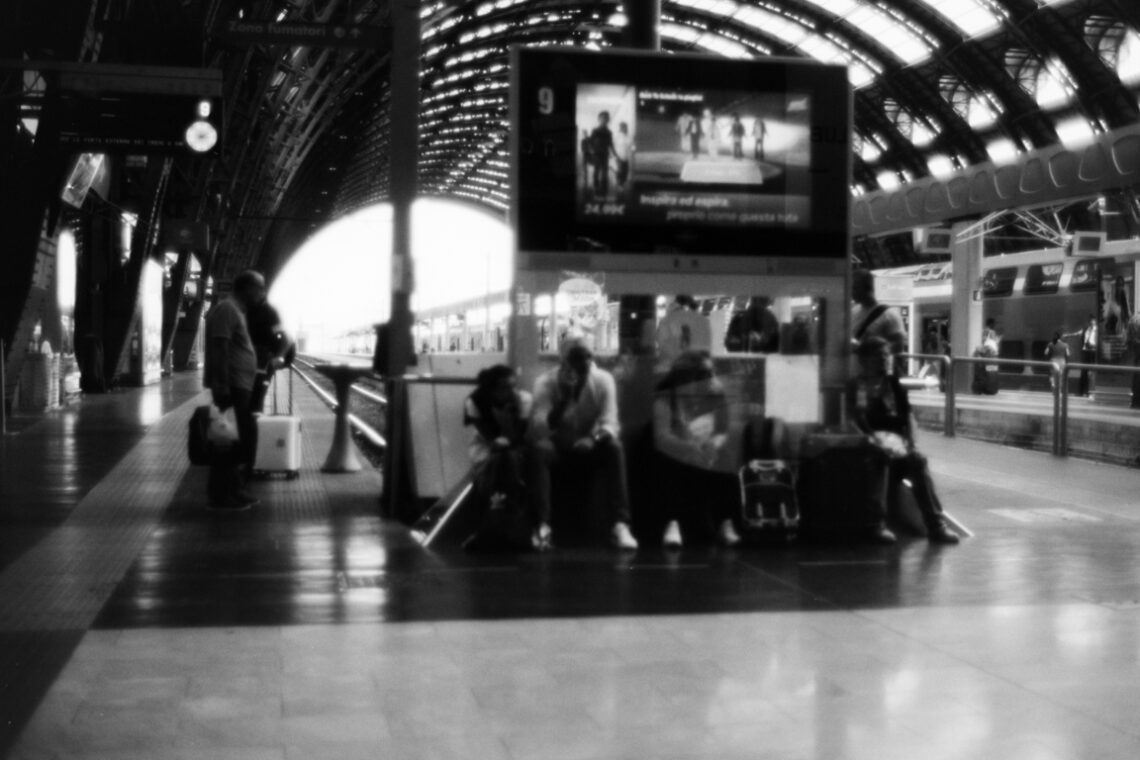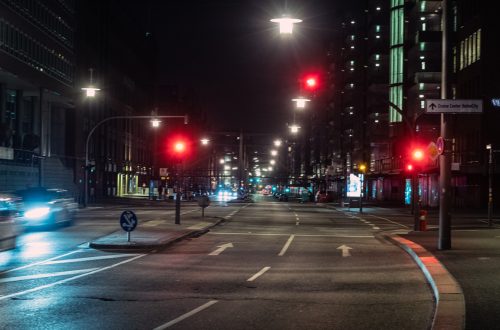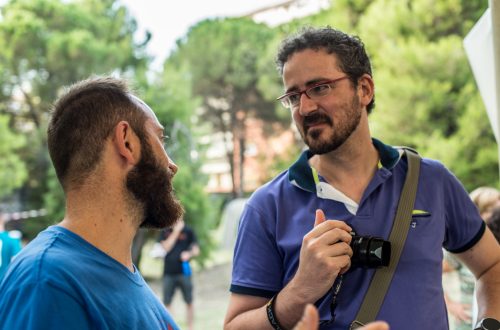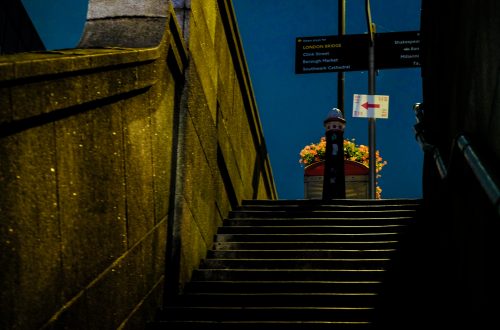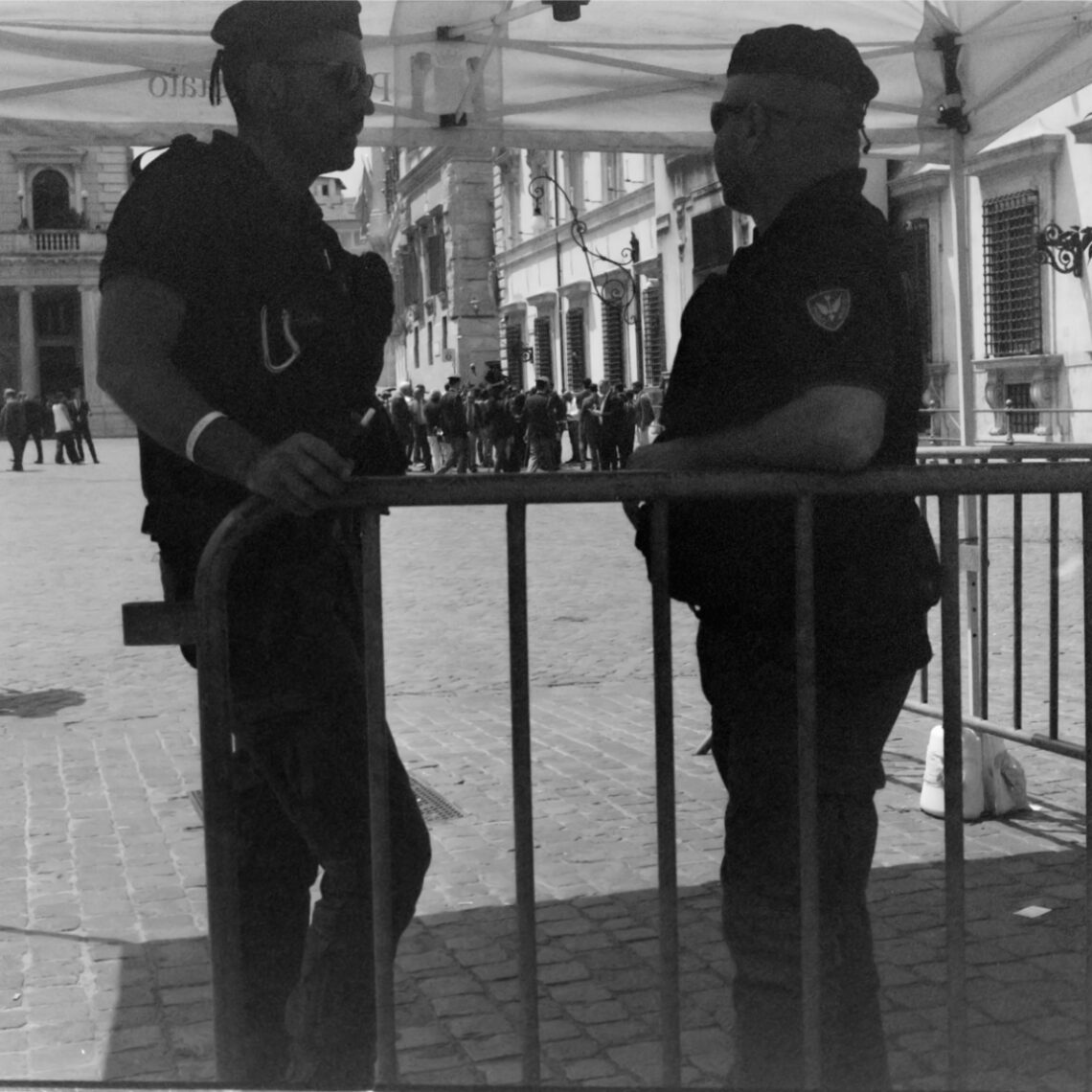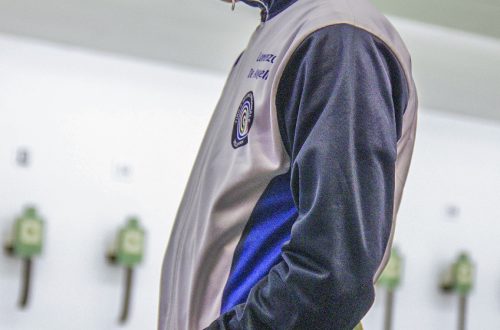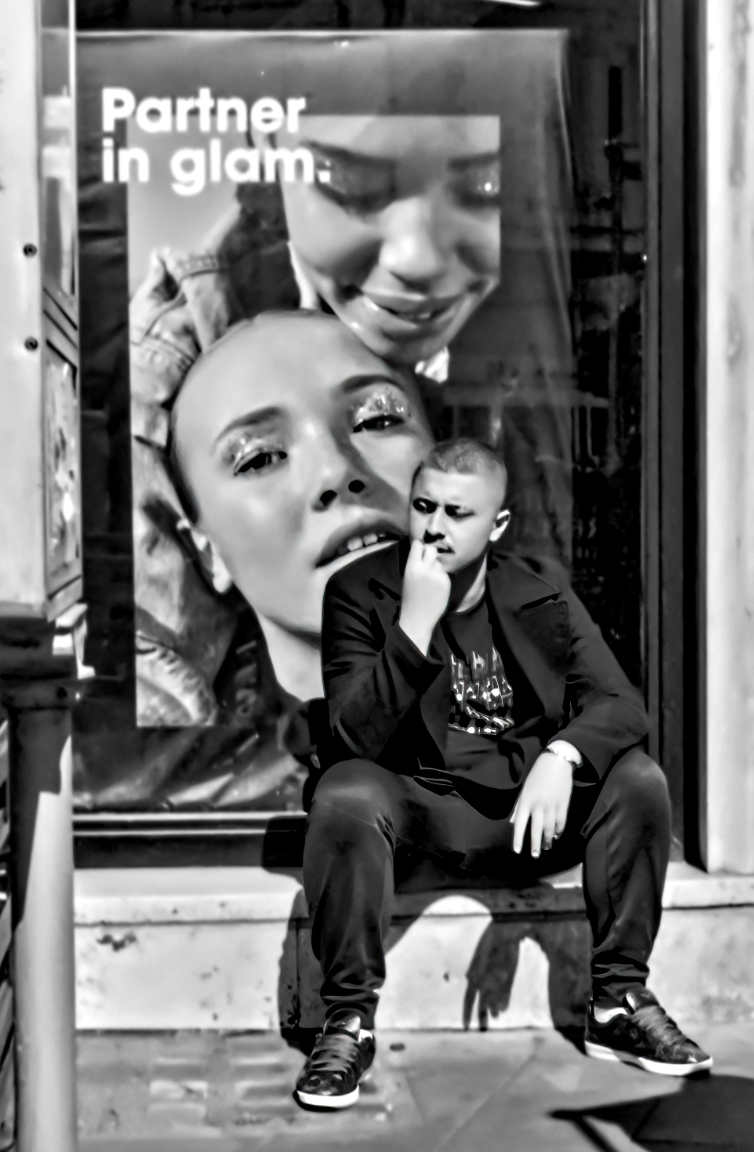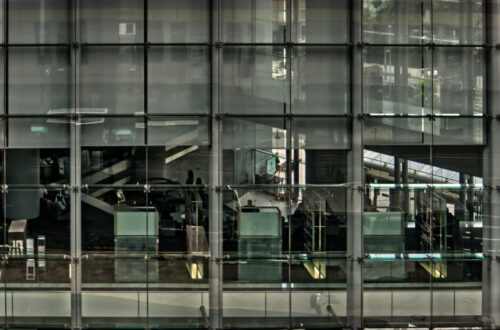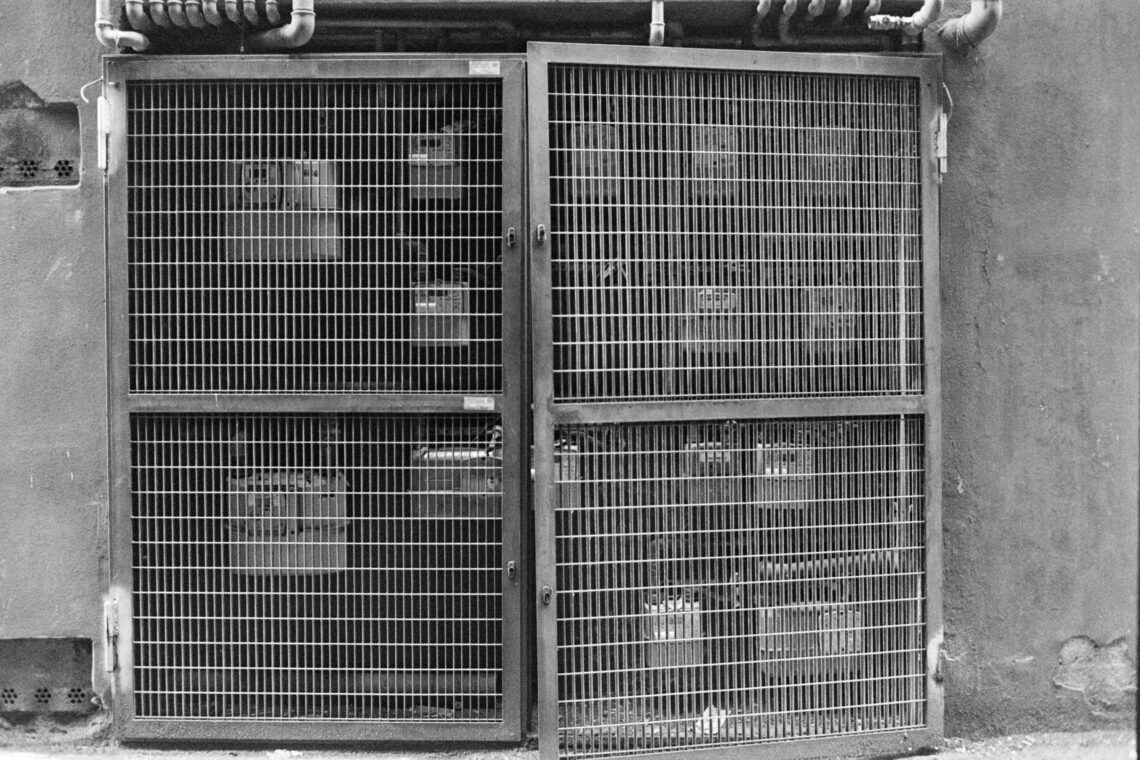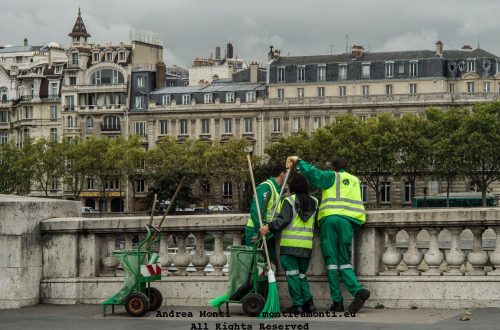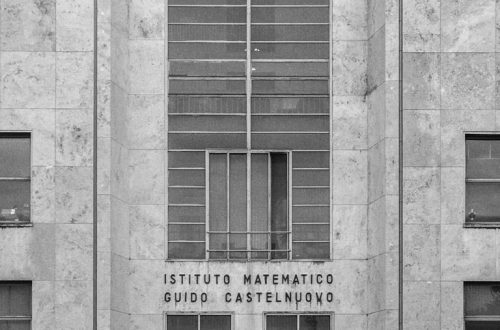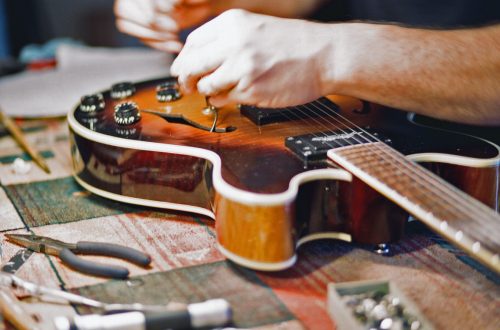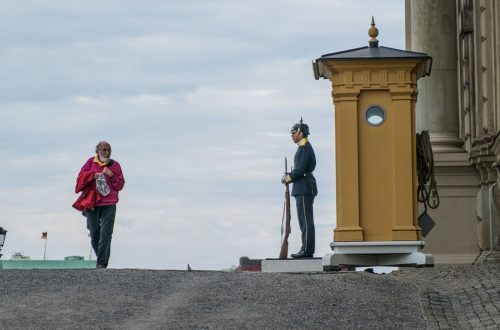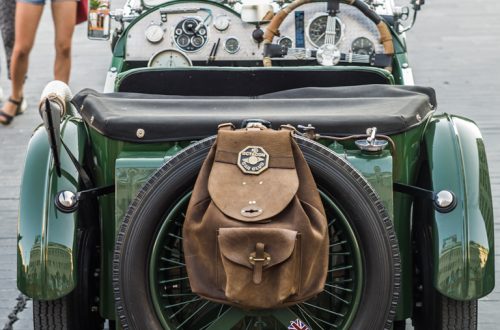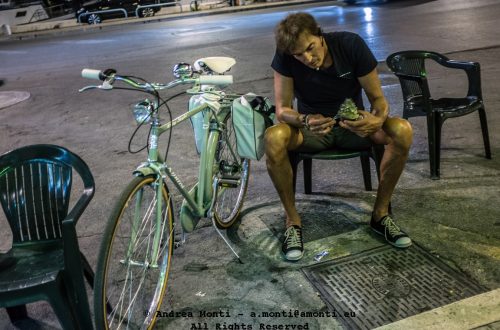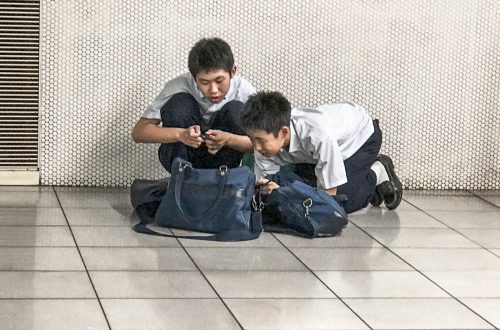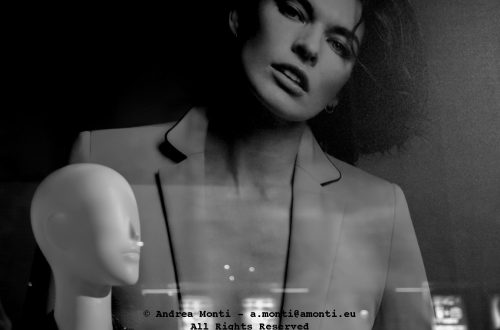-
5 frames with a Voigtländer Bessa R2, a Nokton 35/1,4 and a roll of an expired Kodak Portra 160
Tevere, the river that divides Rome in two, is one of my favourite places. No matter how much chaos there is in the ‘high places’: walking along the banks of the river puts you in another dimension, where time has no meaning and the pace slows down – Initially published on 35mmc.com Anchored boats stand still, in stark contrast to the fast-moving streets, crowded with cars, bicycles, pedestrians and tourists who have returned in droves once the pandemic is over. This is obviously a mirror image, but it looks as if it has been projected onto a digital screen. And here is what was mirrored: There are a lot of…
-
A Hellish Look
It is quite common these days to see images of various kinds using the facade of a building as a screen. In the case of government or state buildings, a flag appears out of nowhere after dusk.The overall effect is quite spectacular, especially in Italy where the palaces of power are beautiful works of art. However, when photographed with a narrow field of view, the result can be disturbing, as in this case, where the building looks more like some sort of hell embassy.It wouldn’t be strange, though: doesn’t the Pope live on the other side of the Tevere River?
-
Actors, Autumn, B&W, Bruxelles, Colour, Daily photo, Fighters, Fighting Disciplines, Photography, Spring, Summer, Winter
What Does ‘Professional’ Mean in Photography?
Pro’ is the photographer’s blessing and curse. It is the status we all – well, many of us – aspire to. It is the marketing gimmick created by the exploiters of the Gear Acquisition Syndrome to make people believe that tools make the craftsman. ‘Amateur’, on the other hand, is a word associated with casual photographers, ‘wannabe’ artists, and people who want to make you believe that tools make the craftsman. I have always been unconvinced that such a difference exists, at least in the general meaning associated with the words ‘pro’ and ‘amateur’, and in relation to the idea that the equipment used or the quality of the shots…
-
A Stop in Reggio Emilia
I was on the Freccia Rossa, heading north, not looking to make a photograph — but then the train slowed. It always does here. Reggio Emilia AV, Calatrava’s cathedral of transit. Seen from inside a carriage, the station transforms into a cinematic abstraction: rhythm, shadow, tension. You’re not meant to get this view. You can’t stand still inside it, only pass through. This frame came with no time to compose. I raised the camera, guessed exposure, shot through a tinted window, and trusted instinct. The image that resulted is harsh, grainy, flawed — and I kept it that way. A perfect rendition would have dulled it. What mattered was the…
-
An Antique Shop in via Cadorna
I made this frame with a Bessa R2 paired to a Nokton Classic 35mm f/1.4, loaded with Kodak Tri-X 400. That combination has a way of imposing its character on an image, and here it played straight into the atmosphere of the scene. The urn in the foreground caught my attention first, its surface worn and flaking, the sort of texture that Tri-X renders with a quiet authority. Its reflection in the shop window doubled the presence without turning the composition into a perfect mirror—imperfections in the glass kept it alive. The rust-speckled lamp leans towards it, both physically and compositionally, as though curious about the object’s past. I exposed…
-
A jam in via Alessandria
Taking pictures with a fully manual camera is a way to keep practising the basics. Honestly, I would not use a film camera for a professional assignment —at least, not as the main one— but it’s worth doing it in a less challenging condition.As per the technicalities, waiting for the next batch of Ferrania Orto to arrive, I resorted to a Kodak Tri-X 400 roll, which is my favourite film at these ISOs.
-
How Privacy Hysteria Killed Street-Photography
At other times I would have dismissed this image as ‘out of focus’ and unusable. Just another missed shot caused by poor focusing technique on a fully manual film camera. Nowadays, however, I have begun to change my attitude towards these kinds of blurred images because of the privacy hysteria affecting the practice of street photography. There have been cases where people have been found guilty of harassment for covertly taking pictures in public spaces, but street photography has nothing to do with criminal behaviour. There is a huge difference between taking sneaky, random, meaningless pictures of people on the street and trying to freeze sketches of life to tell…
-
Hidden in Plain Sight. A Japanese Journey
Although I have a lot of pictures from my various trips to Japan, organising them into a book is a challenge. The photos themselves are good enough to deserve publication. However, most of them are affected by a ‘déjà-vu’ effect. People on the subway, crowded crossroads, striking contrasts between modernity and the past, or between rural areas and highly urbanised ones, pop culture vs. business culture… no matter how hard I try, every single photo gives the feeling that someone has already done it. I am neither an anthropologist nor an expert on Japanese society, so I have no reasonable explanation for this feeling. Perhaps it is simply a matter…
-
The Expired Film Series – Episode 2 – Ilford XP2Super 400 – Nov. 2017 shot in May 2023
This is the second episode in a series documenting the use of expired film in various contexts (mainly in Rome, Italy). Episode 2 features an Ilford XP2Super 400 shot with a Voigtlander Bessa R2 and a Voigtlander Nokton 35/1,4 in Rome (IT), between Colle del Quirinale and Piazza di Montecitorio. Also in this case, but this time by mistake, film’s ISO and the exposure compensation were not adapted to allow more light to impress the film. Once again, the blacks lack detail and show severe grain.
-
Guarding Democracy
Shot on film, this frame came from a day of walking — not searching, just watching. I didn’t need to look far. Two officers, positioned under a temporary gazebo, leaned into casual conversation, framed by the barricade they were meant to man. Beyond them, a crowd gathered in orderly concentration. The juxtaposition wasn’t loud, but it was clear: authority in the foreground, public in the distance. The separation was both literal and symbolic. The choice to shoot from behind the barrier wasn’t just compositional — it was contextual. I wanted to keep the divide intact. The vertical bars bisecting the two officers are rigid, unforgiving. They draw the eye down,…
-
Partner in Glam
I framed this shot fast — the kind of street moment that gives you three seconds to get it or lose it. What pulled me in wasn’t the man alone, nor the advert behind him. It was the convergence. His physical presence, heavy and brooding, intersecting perfectly with the oversized face of the model. Two expressions, one contemplative, one seductive, unintentionally in conversation. The poster reads Partner in glam. A marketing line, forgettable in most contexts. But set against this man, seated in shadow, caught mid-thought, it takes on irony. Or honesty. Depends how you read it. Technically, the photo leans hard into contrast. Shot in direct sunlight, the shadows…
-
A Frame Within a Frame Within a Frame
The irony didn’t hit me until I developed the roll—an expired Ilford XP2 Super 400 that had been lounging at the bottom of a drawer for years. Shot with a Voigtländer Bessa R2 paired with the Nokton 35mm f/1.4, this image is as much a meditation on layers as it is a commentary on isolation. What initially looked like an ordinary street shot—girl on a call, perched on a windowsill—turned out to be a trifecta of enclosures: her physical pose wrapped in posture and winter clothing, set within the architecture of the window, itself encased in the framing of the building. Beyond, the city reflects itself, ghostlike, on the glass—another…
-
Powermeters
This photo was taken with an Ilford XP2 Super 400, a Voigtländer Bessa R2 and a Voigtländer 35mm f/1.4 II lens. The film was digitised using a Pentax K-1 and a Pentax FA 100/2.8 Marco mounted on a custom-built rig. The resulting raw was processed in Affinity Photo. In Develop Persona, first the image was turned in black and white, then the master curve was intverted and finally exposure, contrast and other parameters were tweaked.
-
An attempt at DSLR-made film digitization
This is the first usable result of the attempt to DSLR-scan films. I tried several approaches, including the standard tripod holding the camera perpendicularly to a flat, LED-lighted surface. However, I finally went for a different solution: a horizontal rig with two moving plates, a micrometric head holding the film and three-axis and a panoramic head holding the camera.
-
Easy To Shoot?
This picture might look “ordinary” but for the fact that I shot it with a rangefinder film camera (guess which?) during the scene change between to acts of a theatre play. Scene assistants were placing the furnitures, actors were trying to focus on their parts, there was no time (and place) to design a proper composition and set the camera. No autofocus, no real-time exposure and white-balance setting. Maybe I have been lucky capturing the match flame close to the cigar, maybe it was because of “muscle memory”, but I did it nonetheless. Problem is that I could not be sure if I succeeded until, one week later, I saw…

